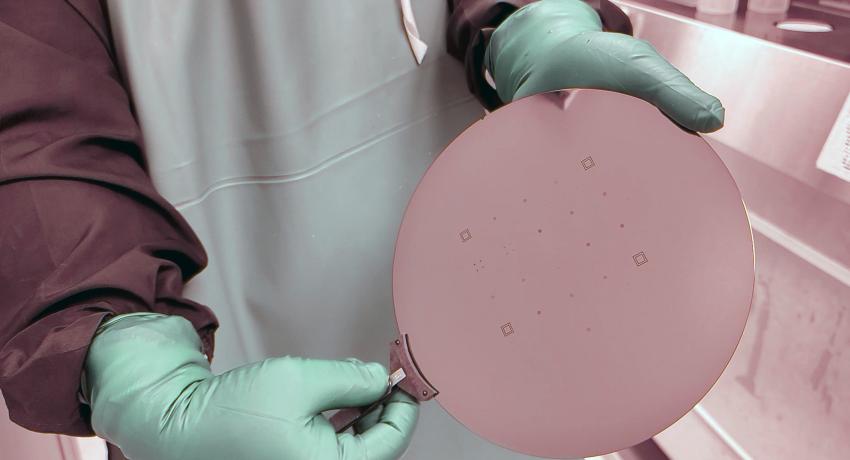Penn State’s Role in Setting a Course for America’s Semiconductor Future. Credit: Adobe Stock
By Jamie Oberdick
Semiconductors are a big reason as to why you are reading this. This is not a reference to your interest in semiconductors as a subject, but the actual production of this website. Even if you are reading the print version of this article and not the online version, semiconductors played a role in creating that hard copy via word processing, graphic design, digital photography, and even the printer that printed the pages. Such is the ubiquitousness of semiconductor chips in our current society.
This level of “everywhere” with semiconductor chips will only increase as technology moves forward. This will lead to some real challenges for our future, from reversing the drop in American share of global semiconductor production to Setting a Course for America’s Semiconductor Future the hunt for a replacement material for silicon. In response to this, a bill was signed this August that sent a charge through the American semiconductor world, from industry to academia.
The bipartisan CHIPS (Creating Helpful Incentives to Produce Semiconductors) and Science Act of 2022 was signed into law on Aug. 9 by President Joe Biden, with a goal of providing federal aid to encourage the construction of semiconductor manufacturing facilities in the United States and to boost scientific research and development. This is a worthy endeavor, for the reasons mentioned above, but it is also a huge endeavor. Passing a law this expansive means the work does not stop when it passes, but it just begins.
While the CHIPS and Science Act is not just limited to semiconductors (it also includes many investments in basic science research), it also includes $52 billion in investment in American semiconductor manufacturing capabilities.
“The future of semiconductor devices will be based on a broad spectrum, a diverse portfolio of materials and structure, smart manufacturing, sophisticated packaging solutions, innovative R&D, and perhaps most importantly, the development of an American workforce that has the capabilities to pull all of this off,” said Clive Randall, director of the Materials Research Institute (MRI).
Penn State and the Material Research Institute are well positioned to lend a helping hand making this vision come to fruition. The University receives a perennial high ranking for materials research in the National Science Foundation’s (NSF) Higher Education Research and Development (HERD) survey, most recently number one in the nation for materials science and number two in the nation for materials engineering. These achievements are enabled by the tools and technical staff expertise in MRI facilities, such as the Nanofabrication Laboratory, the NSF national user facility the 2D Crystal Consortium, the Materials Characterization Laboratory, and the Institute for Computational and Data Science.
“Materials science and engineering shape the world around us, making the marvels of the information age possible, providing us with clean and affordable energy, transporting us on land, sea, and air, and keeping us connected with friends and colleagues thousands of miles away,” Daniel Lopez, Penn State Liang Professor of Electrical Engineering and Computer Science and MRI Nanofabrication Laboratory technical director. “Such unprecedented achievements of technology and engineering have their foundation in the discovery science that results in materials, devices, and opportunities to enhance the quality of people’s lives.”
As Randall noted, this is a full spectrum effort, and beyond research wins, Penn State is also a recognized leader in the education and development of the semiconductor workforce. Examples of this include the Center for Nanotechnology Education and Utilization, which as prepared approximately 1,000 students to work in the semiconductor industry, and the Center for Nanotechnology Applications and Career Knowledge, an NSF-supported advanced education and workforce development center.
“Nowadays, universities and colleges in the USA contribute to about 55% of the semiconductor workforce,” Lopez said. “Thanks to the CHIPS and Science Act’s programs, it is expected that the demand for workers trained in the multiple aspects of semiconductors and microelectronics manufacturing will increase more than twice in the next five years. This represents a formidable challenge for American universities because we are not ready to generate such a large number of professionals. We must identify novel paradigms to foster collaborations between universities and industry that attract a larger and more diverse population of students and specialists across the U.S.”
A major focus of the CHIPS and Science Act is it will create regional hubs that will help regions of the country that have limited job opportunities. Currently, part of the planning around semiconductors at Penn State is to build on the partnerships with industry (currently more than 100 companies), government, and other educational institutions (250 independent organizations in the last five years) to create a regional hub with a small group of other universities to develop new materials, a skilled workforce, and new projects.
On Sept. 16, while a guest on the New York Times podcast The Ezra Klein Show, Felicia Wong, president and CEO of the think tank The Roosevelt Institute, echoes the importance of this concept in helping states with large rural populations like Pennsylvania improve their economy.
“…one of the important pieces of this legislation is that it does create regional hubs. And let’s just think about this for a second,” Wong said. “One of the major problems with our current economy is inequality, not just between the top 1% and the lowest income earners, but it’s also regional inequalities. You see whole parts of this country that really have no jobs to speak of. And there are very few anchor institutions — schools, universities, community colleges, hospitals. You see whole places in this country that don’t have private sector investment, and also don’t have these kinds of public institutions.”
The stakes for everyone in America are obviously quite high. Penn State is helping to push us forward into the new, exciting semiconductor world envisioned by the CHIPS and Science Act.
This article originally appeared in the Fall 2022 issue of Focus on Materials.

